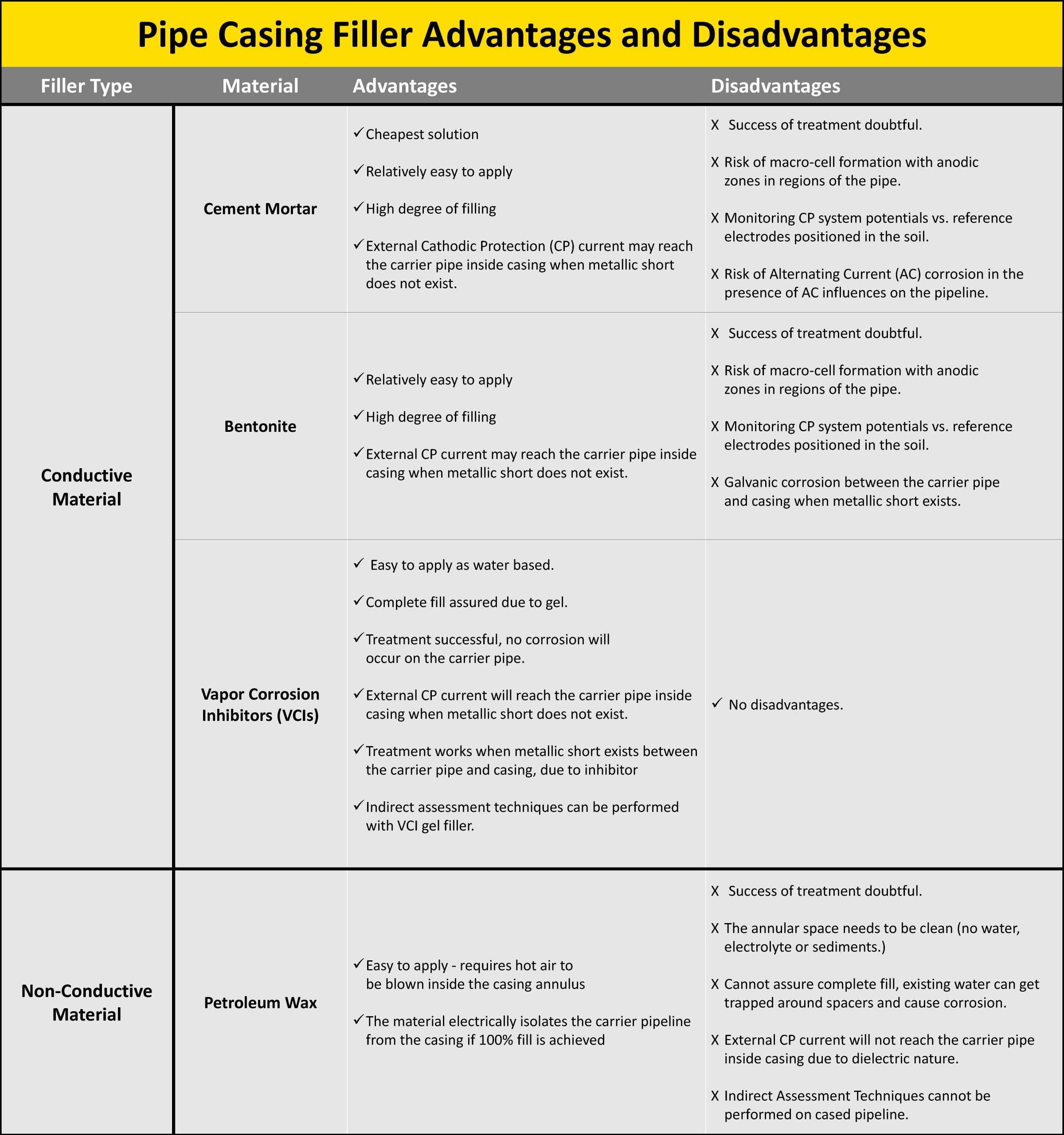Types of Casing Fillers - Advantages and Disadvantages

Types of Casing Fillers: Advantages and Disadvantages
Casing fillers are used to prevent corrosion on carrier pipelines. NACE SP0200-2014 defines casing fillers as products placed in the annular space between the carrier pipe and casing pipe to inhibit corrosion and prevent the ingress of electrolyte.
The oil and gas industry has utilized several types of casing filler materials over the years. Some have become obsolete due to elevated corrosion risks, while others remain in use today. Below is an overview of common casing fillers, their material composition, and the pros and cons of each.
Casing Filler Comparison Chart
Limitations of Cathodic Protection (CP) Inside Casings
Cathodic Protection (CP) has been used inside casings with zinc ribbon anodes to protect carrier pipes. However, this technique has proven to be largely ineffective for several reasons:
- Relies on rainwater to act as an electrolyte.
- Zinc passivates over time and stops providing CP current.
- Complex installation process with potential for creating a metallic short between the carrier and casing pipe.
Why VCI Gel Filler is the Preferred Solution
VCI (Vapor Corrosion Inhibitor) gel filler is considered a state-of-the-art technique for corrosion prevention. Here's why:
- High pH level (9.5) and inhibitor mechanism significantly reduce corrosion rates of steel pipelines in contact with VCI gel electrolytes.
- Provides a conductive path for CP current while offering background corrosion inhibition in electrolytic couple scenarios.
- Mitigates corrosion in metallic short scenarios by allowing CP current to flow and providing additional protection to carrier pipes.
- Improves accuracy of indirect assessment techniques during periodic pipeline reassessments.
- Allows corrosion mitigation monitoring through ILI (In-Line Inspection) techniques.
Learn More About VCI Gel Fillers
For more information on the advantages of using VCI gel filler for pipe casings, click here.


